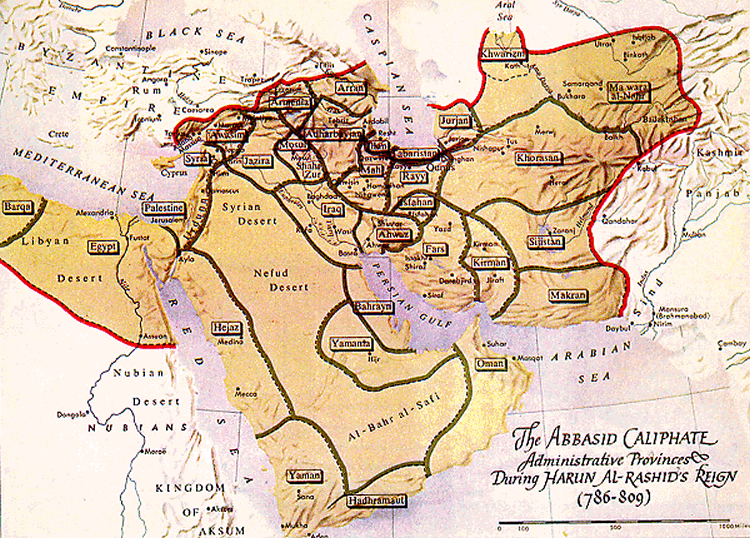Golden age of Islam.
The Islamic Golden Age is dated from the 7th century to the mid-13th century when Muslim rulers made one of the largest empires in history.
During this period, artists, engineers, scholars, poets, philosophers, geographers and traders in the Islamic world contributed to agriculture, the arts, economics, industry, law, literature,, philosophy, sciences and technology. They did this by using earlier information and by adding inventions and innovations of their own. Also at that time the Muslim world became a major Centre for science, philosophy, medicine and education. In Baghdad they established the “House of Wisdom“, where teachers, both Muslim and non-Muslim, gathered and translated all the world’s knowledge into Arabic. Many ideas from Greece and Rome would have been forgotten but they were translated into Arabic. Knowledge was also brought from works originating in ancient Mesopotamia, Ancient Rome, China, India, Persia, Ancient Egypt and North Africa. The Islamic empire brought together for the first time peope from all over the world. A major invention from this time was paper – originally a secret guarded by the Chinese. Papermaking was taken from prisoners at the Battle of Talas.. The Arabs improved the Chinese techniques. By AD 900 there were hundreds of shops employing writers for books in Baghdad and libraries began to become created. From here paper-making spread west to Morocco and then to Spain and from there to Europe in the 13th century.
